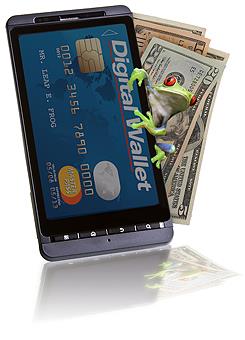Have you heard that paying at the cashier can be as easy as waving your smartphone?
With the rollout of digital wallets from Google (currently in beta) and Visa (coming this fall), quaint analog gadgets like cash and billfolds — and even plastic credit cards with their magnetic stripes — may be on the way out.
How is this possible? Through Near Field Communication, or NFC. NFC is short-range wireless technology that allows two devices to communicate when they are really close together — about 1.6 inches or less. To enable communication, you just enter your PIN. Japan began its cashless NFC journey years ago.
Google Wallet is the first U.S. product to take full advantage of NFC retail capabilities. It’s a free Android app that stores encrypted, virtual versions of your existing plastic credit cards. It also stores coupons and eventually will store loyalty and gift cards, too. Currently it’s only compatible with one phone, the Nexus S 4G on Sprint, and supports only two payment options – the Google Prepaid Card and Citi® MasterCard® with PayPass™. But that will change. You can sign up for Google Wallet updates on the homepage.
When Visa launches its digital wallet this fall, you’ll see features that work across channels (mobile, e-commerce, social) and can be ultra-tailored just for you. Will competitors follow? You bet, including Apple, which has already applied for patents, and a mobile wallet system called ISIS from AT&T Mobility, T-Mobile USA and Verizon Wireless.
Merchants love NFC technology because consumers spend more when it’s easier to pay (just ask Starbucks about their prepaid cards). And consumers will love it because it’s streamlined, faster and lets you hop through the checkout line.
And don’t be surprised if sometime soon a sales clerk scans your credit card using a smartphone or tablet. A tiny Square credit card reader that plugs into an audio jack is changing the entire concept of the checkout line.

